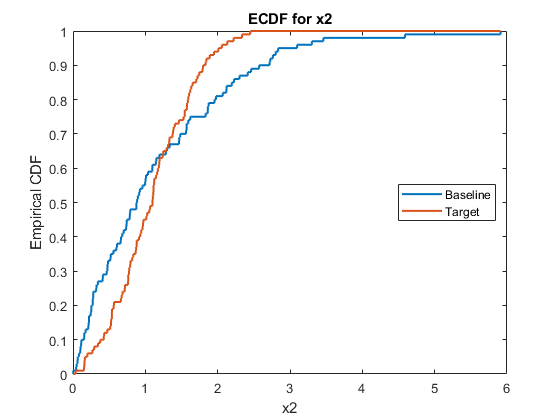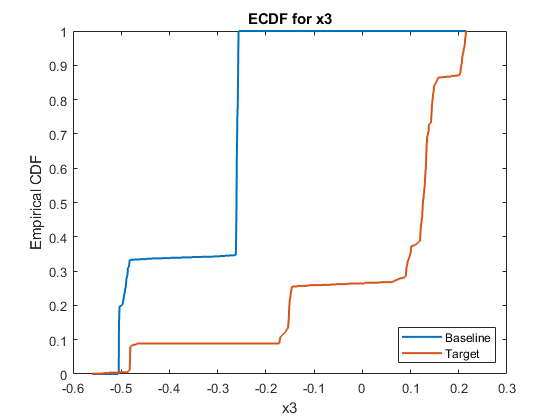ecdf
Compute empirical cumulative distribution function (ecdf) for baseline and target data specified for data drift detection
Since R2022a
Description
E = ecdf(DDiagnostics)E, which stores the ecdf values for all the variables
specified for drift detection in the call to the detectdrift
function.
ecdf returns NaN values for categorical
variables.
E = ecdf(DDiagnostics,Variables=variables)E for the variables specified by
variables.
Examples
Input Arguments
Output Arguments
Version History
Introduced in R2022a
See Also
detectdrift | DriftDiagnostics | plotDriftStatus | plotEmpiricalCDF | plotHistogram | plotPermutationResults | summary | histcounts

